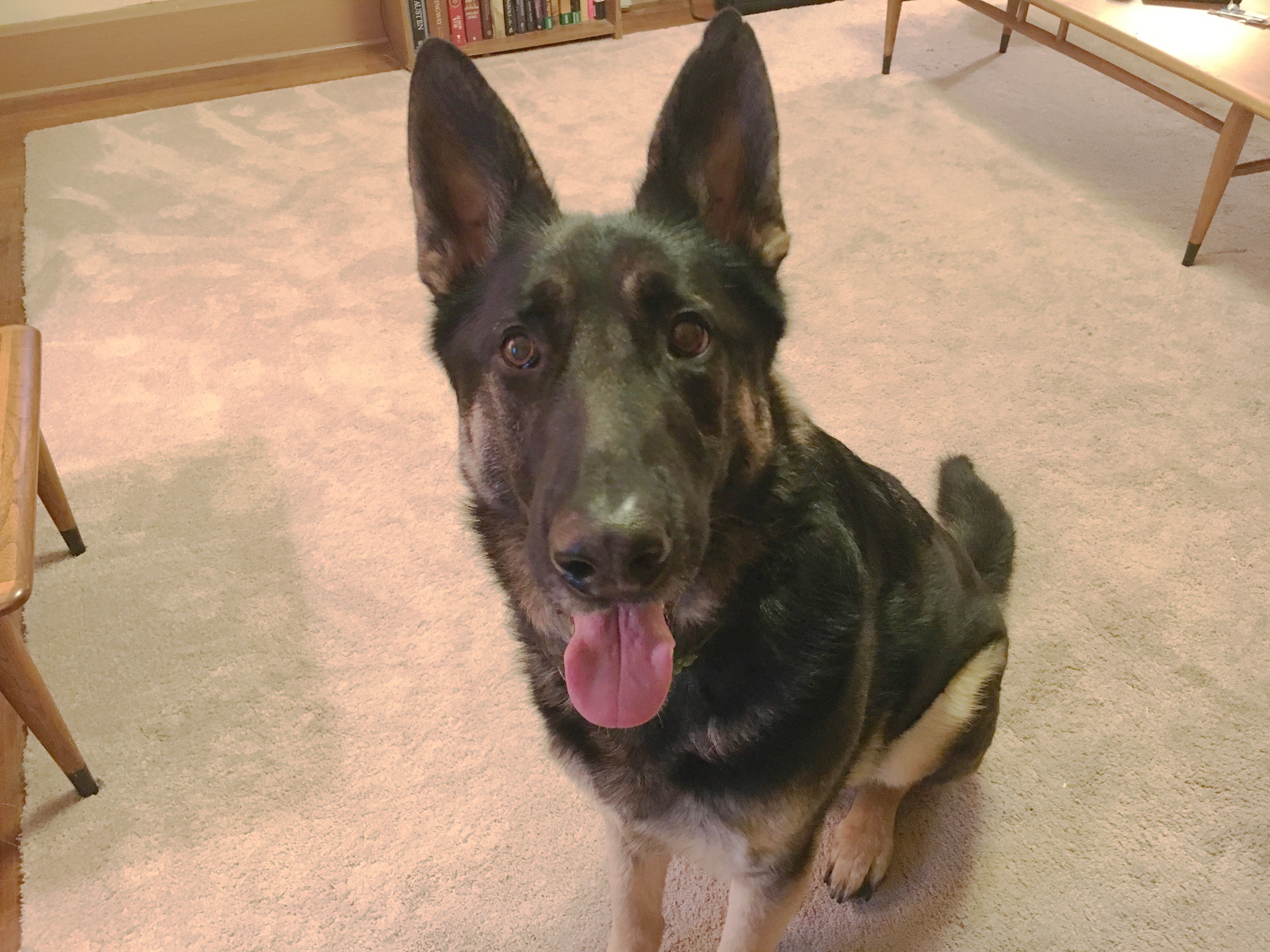Tips to Help a German Shepherd Calm Down for Walks
By: David Codr
Published Date: March 22, 2018
For this Nebraska dog training session, we worked with Jude, a 3-year-old German Shepherd who is reactive to people who pass his home and so excited for walks he is almost uncontrollable on the leash.
Jude and his guardian recently moved to a small town with no dog park and their new home doesn’t have a fenced in yard. Because he pulls on the leash like crazy and is protective of his guardian (lunging toward some strangers) his exercise decreased considerably which had a negative impact on his overall behavior.
As a dog behavior expert, I knew how to adopt soft body language and meet Jude in a positive way so he was not at all aggressive with me. But since he is a big dog and most people dont see things with a dog behaviorist eye, I came up with a strategy his guardian can use to help him start to develop a positive association with the arrival of new people.
This approach is a hybrid of counterconditioning principles and what we like to call a Conditioned Emotional Response or C.E.R.. Stopping a dog from acting aggressively to strangers is a common request I get.
Obviously no one wants to have a human aggressive dog, but I have found in many of these cases, this dog is not really human aggressive. Most of the time the dog is acting aggressively towards strangers because they don’t feel comfortable with them and don’t want the person to get any closer. The dog has simply learned that acting aggressively is an effective way to get more distance between itself and the human.
It will be important the guardian finds a distance far enough from the door to practice this dog behavior exercise. If Jude is barking or reacting, he will likely be above threshold which makes working on the problem impossible. We need Jude to be far enough away that he doesn’t feel a threat or need to react – sub threshold.
If Jude continues to act this way around strangers, his guardian may need to sign him up for a BAT course with us this summer. BAT stands for Behavior Adjustment Training. Its a very cool approach where we set up staged situations to help the dog learn to offer a different behavior. Instead of lunging at a person to get more distance, they turn or move away on their own.
Im hopeful the technique I outlined in the above video does the trick. Jude is really a sweet dog and other people should get to experience that themselves.
While the lunging is a big problem, Jude not getting exercise is only going to make things worse. Stopping a dog from pulling on the leash is one thing, stopping a dog from lunging at someone on the leash takes it to a totally different level.
The walk actually starts the second you put on the leash. I spent a few minutes going over how to communicate to Jude that he has to stay calm and balanced and in a follower position while being leashed up before he gets to go for a walk.
After showing his guardian how to get him to stay calm while being leashed up, I showed her how to teach a dog to walk on a loose leash by stopping the instant the dog starts to get excited or out of position. You can get some free loose leash training tips by watching the video below.
Training a dog to walk in a heel or with a loose leash takes a lot of time and practice. In Jude’s case, a healthy portion of patience will also be required. One tip I made was to practice the above loose leash walking exercise at times when the guardian has no plans on going for a walk. This helps desensitize the dog which helps it stop getting over excited.
By the end of the session, the guardian felt like she had the tools and strategy she needed to solve Jude’s behavior problems for good. To help her remember all the tips I shared in this at home dog behavior training session, we shot a roadmap to success video.
Categorized in: Dog Behavior


